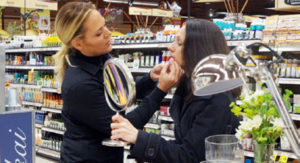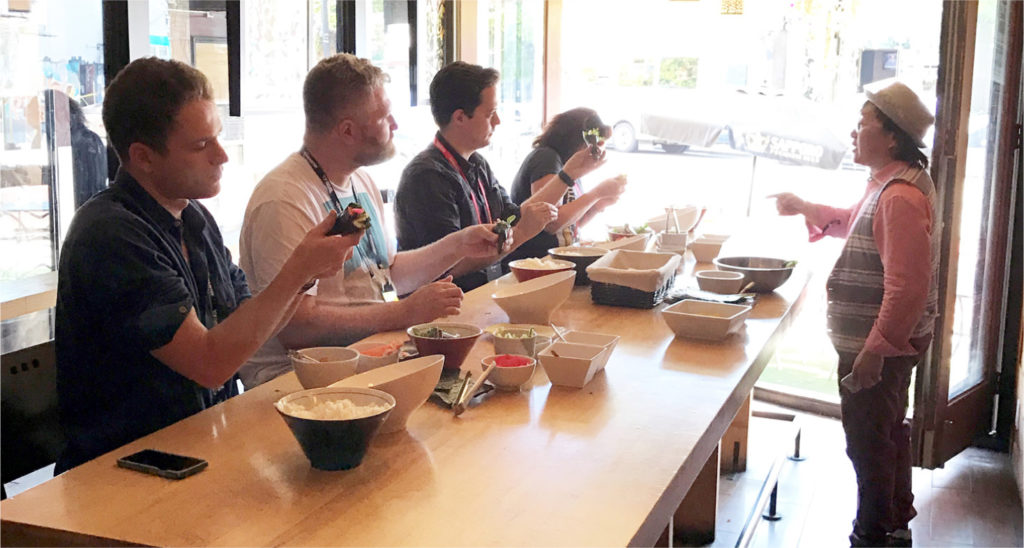
application can help bring skincare and beauty
brands to life through sight, touch and sound.
Technology has transformed our lives—impacting everything from how we communicate, to how we socialize, to how we shop. But after more than a decade of fervor for all things digital, a counter-trend is beginning to emerge. As consumers look to unplug from digital overload, they’re seeking out more varied and immersive experiences—particularly when it comes to retail.
“Digital does very well at some things, like handling basic transactions and providing product information,” admits Ryan Dee, Creative Director for Daymon’s consumer experience marketing team. “But there are a lot of things digital can’t do, like providing authentic, tactile experiences and human connections consumers are looking for today.” That’s where multisensory events can come in—helping retailers and brands (both online and brick-and-mortar) differentiate and drive sales.
Simply put, a multisensory event is one that integrates as many of the five senses as possible and brings them to life in a way that reflects the product being featured. “For example, instead of doing a traditional sampling event that’s just tasting food, you could do something more interactive—like having shoppers create their own samples,” says Dee.
He gives the example of having shoppers create a fresh spring roll to sample a dipping sauce or wrapper. “You could engage shoppers’ sense of touch through the act of putting the roll together, and add in aromatic ingredients, such as herbs or spices, for smell. The sight of the event and the sound of music or an executive chef leading the demonstration could draw shoppers in. Then of course, you engage the sense of taste with the final product,” he explains.
But it’s not just food retailers and brands that can play up multisensory engagement. “Taste may be a harder sense to engage with non-food items, but you can still involve the other senses,” says Dee. “Take our Advance Auto Parts tour—you’ve got the sight of the setup, the sound of the race event in the background, and the touch of featured products on display. Or for beauty products, you can create a spa experience with the sight of the attractive products and décor, the touch of makeup artists doing applications, the sound of soothing music, and the smell of featured fragrances or calming essential oils.”

Dee notes that some retailers and brands have shied away from these kinds of events in the past, assuming that the costs would be too high. “But you can make small tweaks to an event you were already planning to turn it into something more exciting and memorable,” he says. “Like in the spring roll example, the cost of moving from having a Sales Advisor make the spring rolls, divide them into sampling cups and then hand them out versus prepping ingredients so shoppers do it themselves is minimal.”
And even small changes like this can have a big impact. “There’s little brand loyalty today, so when a brand provides customers the opportunity to experience its products in an unexpected or educational way, it helps set them apart from the competition,” says Dee. “It also creates sense memories that can stick with shoppers. When they’re walking down an aisle in the future, they might see the logo of a product that was featured at an event and remember the experience they had with it, increasing the chances they’ll buy that product or brand again.”
To learn more about partnering with Daymon’s consumer experience marketing team, contact Caitlin Shufelberger, Senior Business Development Manager at cshufelberger@interactionsmarketing.com.

